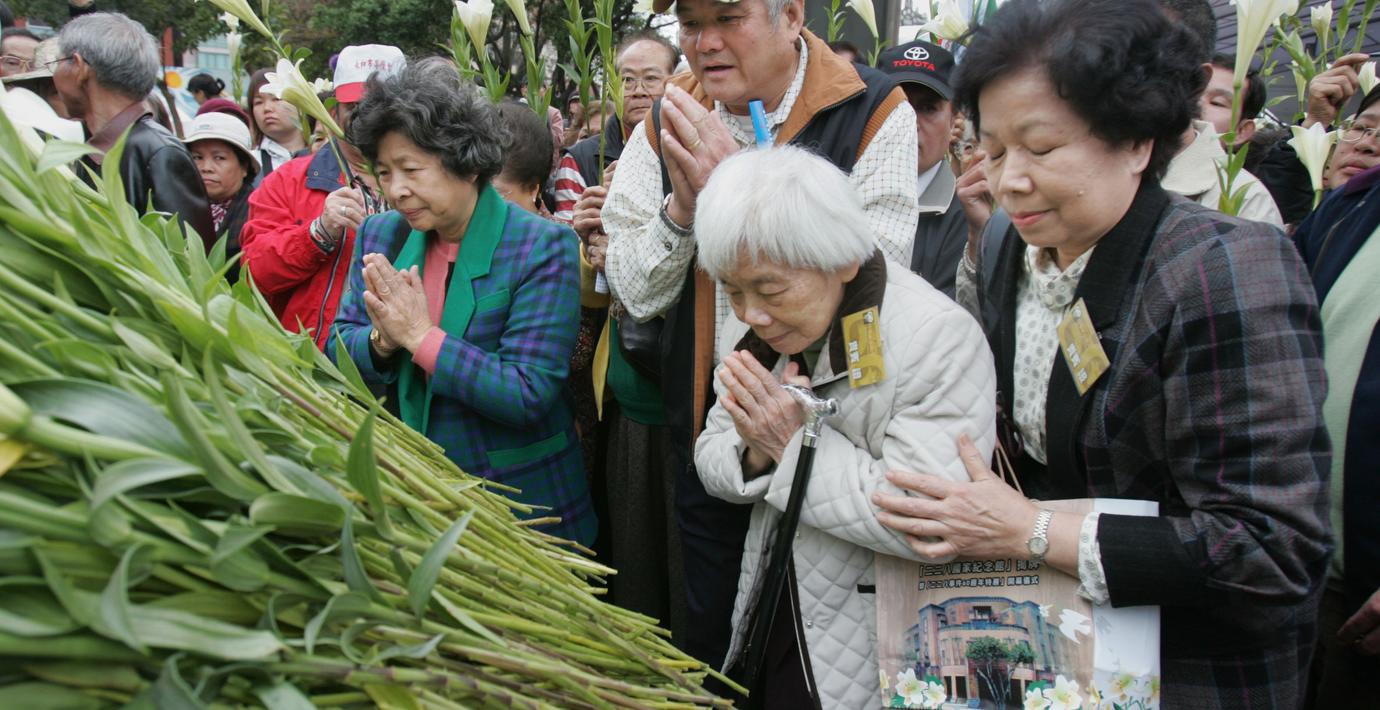
Demonstranter stormade minnesceremoni i Taipei
Ett dussintal demonstranter stormade scenen där Taipeis nye borgmästare talade i dag, skriver AFP. Demonstranterna kallade Chiang Wan-an för mördare och krävde att han bad om ursäkt för blodet som gjutits under massakern i Taiwan 1947.
Aktivisterna var rasande över att borgmästaren höll i en minnesceremoni över massakern när hans påstådda farfarsfar, president Chiang Kai-shek, var den som övervakade det våldsamma förtrycket.
Den så kallade 228-incidenten ledde till omkring 28 000 personers död. Den inleddes när en inspektör slog till en kvinna som sålde obeskattade cigaretter vilket ledde till ett uppror över hela ön.
bakgrund
228-incidenten
Wikipedia (en)
The February 28 incident, also referred to as the February 28 massacre, the 228 incident, or the 228 massacre was an anti-government uprising in Taiwan that was violently suppressed by the Kuomintang–led nationalist government of the Republic of China (ROC). Directed by provincial governor Chen Yi and president Chiang Kai-shek, who was still in Nanjing directing the nation and the Civil War on the Chinese mainland, thousands of civilians were killed beginning on February 28, 1947. The incident is considered to be one of the most important events in Taiwan's modern history and was a critical impetus for the Taiwan independence movement. In 1945, following the surrender of Japan at the end of World War II, the Allies handed administrative control of Taiwan over to China, thus ending 50 years of Japanese colonial rule. Local residents became resentful of what they saw as highhanded and frequently corrupt conduct on the part of the Kuomintang (KMT) authorities, including the arbitrary seizure of private property, economic mismanagement, and exclusion from political participation. The flashpoint came on February 27, 1947, in Taipei, when agents of the State Monopoly Bureau struck a Taiwanese widow suspected of selling contraband cigarettes. An officer then fired into a crowd of angry bystanders, striking one man, who died the next day. Soldiers fired upon demonstrators the next day, after which a radio station was seized by protesters and news of the revolt was broadcast to the entire island. As the uprising spread, the KMT–installed governor Chen Yi called for military reinforcements, and the uprising was violently put down by the National Revolutionary Army. Two years later, and for 38 years thereafter, the island would be placed under martial law in a period known as the "White Terror." During the White Terror, the KMT persecuted perceived political dissidents, and the incident was considered too taboo to be discussed. President Lee Teng-hui became the first president to discuss the incident publicly on its anniversary in 1995. The event is now openly discussed, and details of the event have become the subject of government and academic investigation. February 28 is now an official public holiday called Peace Memorial Day, on which the president of Taiwan gathers with other officials to ring a commemorative bell in memory of the victims. Monuments and memorial parks to the victims of the February 28 incident have been erected in a number of Taiwanese cities. In particular, Taipei's former Taipei New Park was renamed 228 Peace Memorial Park, and the National 228 Memorial Museum was opened on February 28, 1997. The Kaohsiung Museum of History also has a permanent exhibit detailing the events of the incident in Kaohsiung. In 2019, the Transitional Justice Commission exonerated those who were convicted in the aftermath. The number of deaths from the incident and massacre was estimated to be between 18,000 and 28,000. Other estimates are much lower. A government commission was set up under the administration of the pro-Taiwan independence president, Lee Teng-hui, to determine the facts of situation. Using the civil registry set up during the Japanese administration, which was acknowledged by all as very efficient, they determined who was living at the time of the handover to the Chinese administration. The commission was given the power to award to the family of anyone who died in the period of the insurrection and the restoration of Nationalist government rule an amount of NT$6,000,000, about US$150,000. The families did not have to prove that the death was related to the above events. A total of 800 people came forward to get the awards for the people who died during the period. This award was not designed to include any of the 1,000 mainlanders estimated to have died in the uprising.
Omni är politiskt obundna och oberoende. Vi strävar efter att ge fler perspektiv på nyheterna. Har du frågor eller synpunkter kring vår rapportering? Kontakta redaktionen